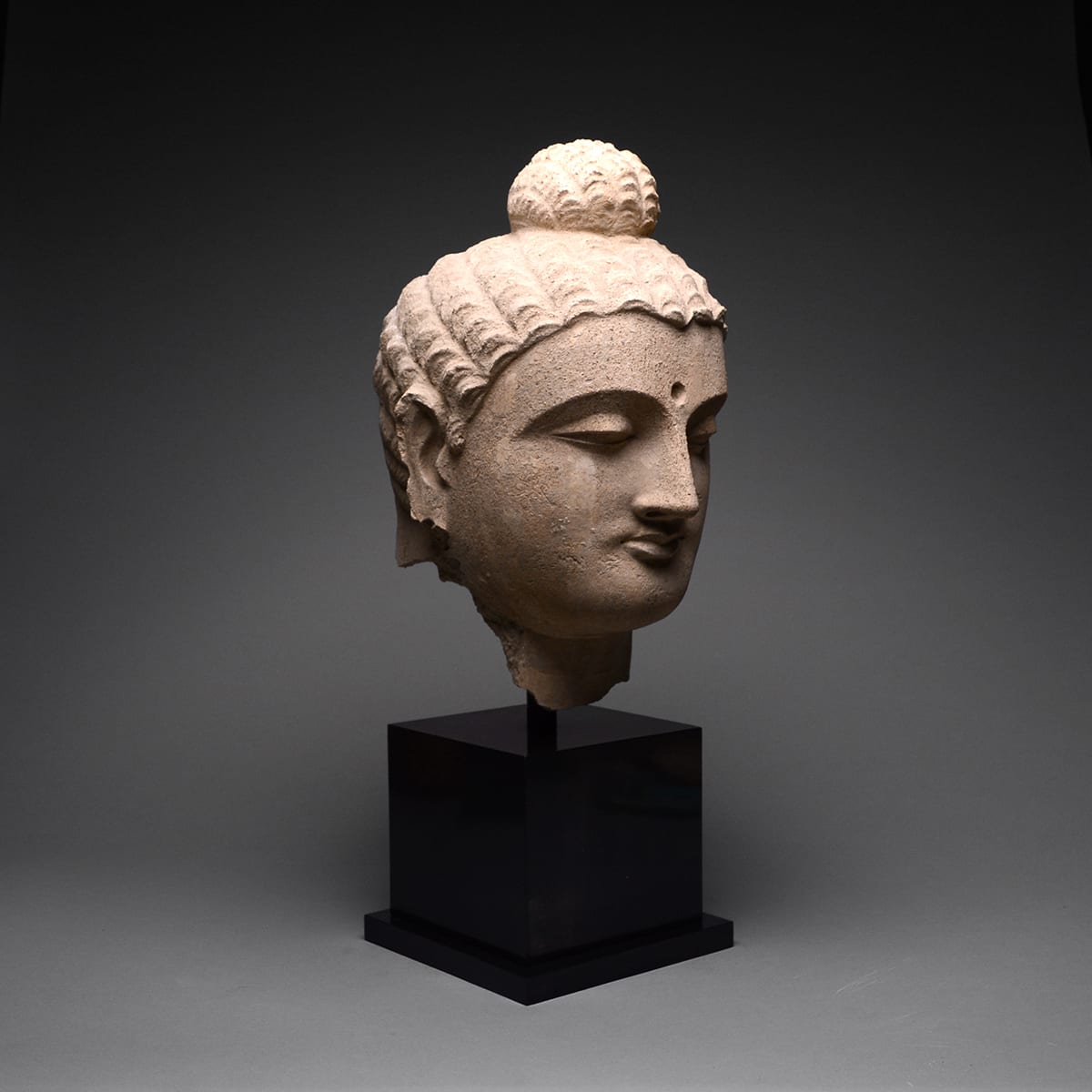Gandhara Stucco Head of the Buddha, 2nd Century CE - 3rd Century CE
Stucco
height 40.6 cm
height 16 in
height 16 in
PF.5607
Further images
The ancient civilization of Gandhara thrived in the region of northeastern Afghanistan and northwestern Pakistan. Situated at a confluence of trading paths along the Silk Route, the area was flooded...
The ancient civilization of Gandhara thrived in the region of northeastern Afghanistan and northwestern Pakistan. Situated at a confluence of trading paths along the Silk Route, the area was flooded in cultural influences ranging from Greece to China. Gandhara flourished under the Kushan Dynasty and their great king, Kanishka, who traditionally given credit for further spreading the philosophies of Buddhism throughout Central Asia and into China. This period is viewed as the most important era in the history of Buddhism. After the conquests of Alexander the Great, the creation of Greco-Bactrian kingdoms, and the general Hellenization of the subcontinent, Western aesthetical tastes became prominent. Greek influence began to permeate into Gandhara. Soon sculptors based the images of the Buddha on Greco-Roman models, depicting Him as a stocky and youthful Apollo, complete with long-lobed ears and loose monastic robes similar to a Roman toga. The extraordinary artistic creations of Gandhara reveal link between the different worlds of the East and West. This sculptural fragment depicts a bust of the Buddha as a young man. His hair is pulled together in a central bun that crowns his head. He wears a heavy looped earring that pulls down on his lobe. Remnants of red polychrome are visible on his lips, on one of his ears, and around his neck, indicating that this sculpture must have once been vibrantly painted. His soft facial features have been delicately molded producing the subtle folds of flesh under his eyes and around his mouth. Above all, this grand stucco head the Buddha is a testament to the awesome creative powers of Gandhara artists.









